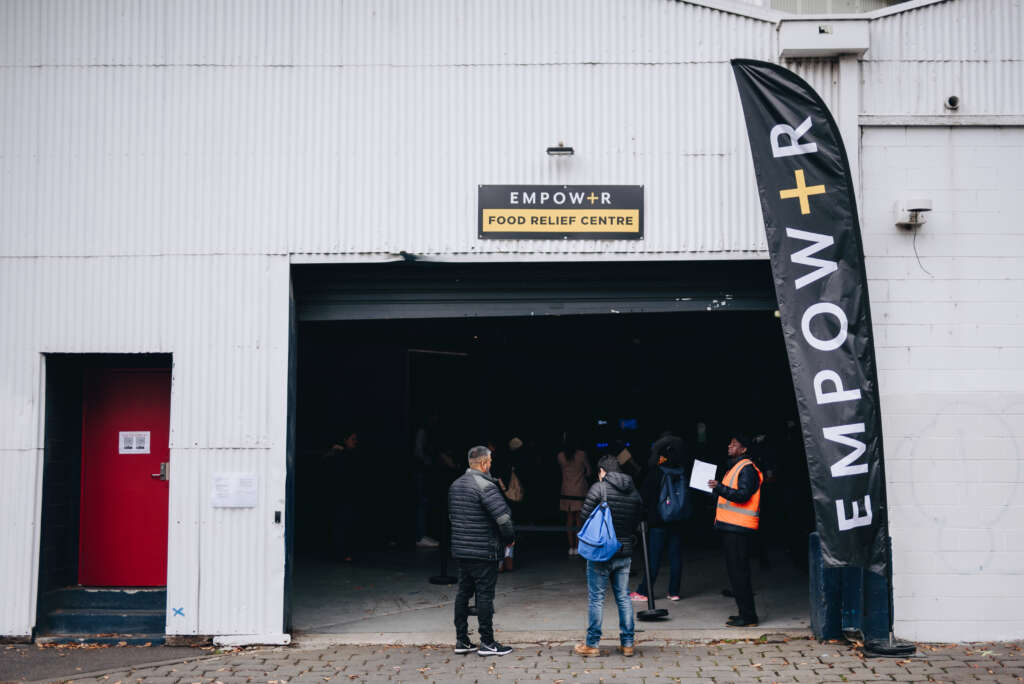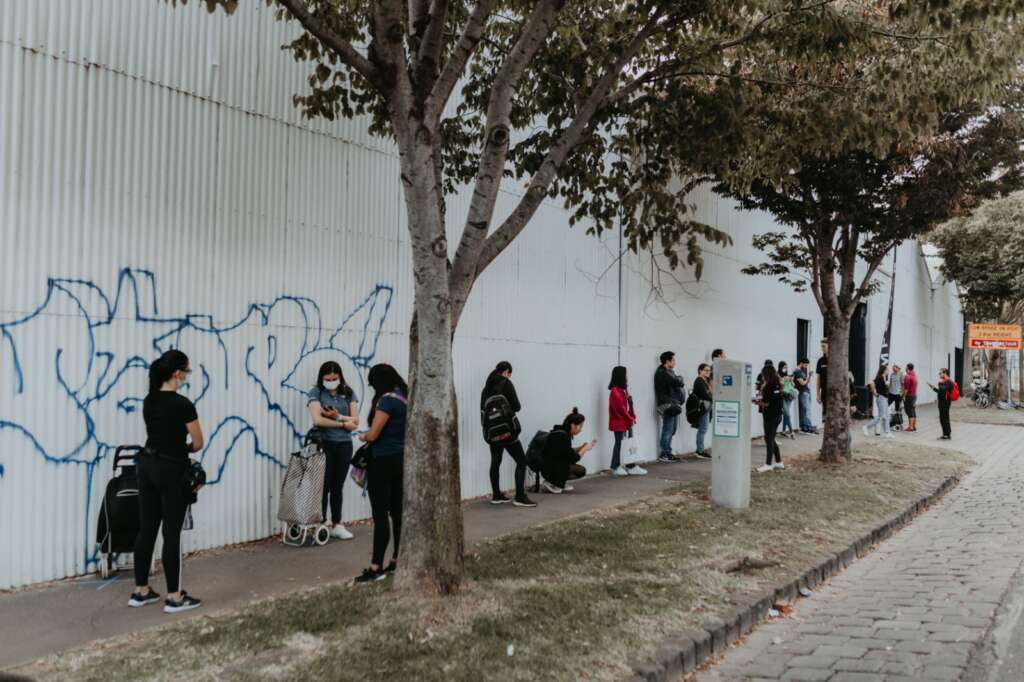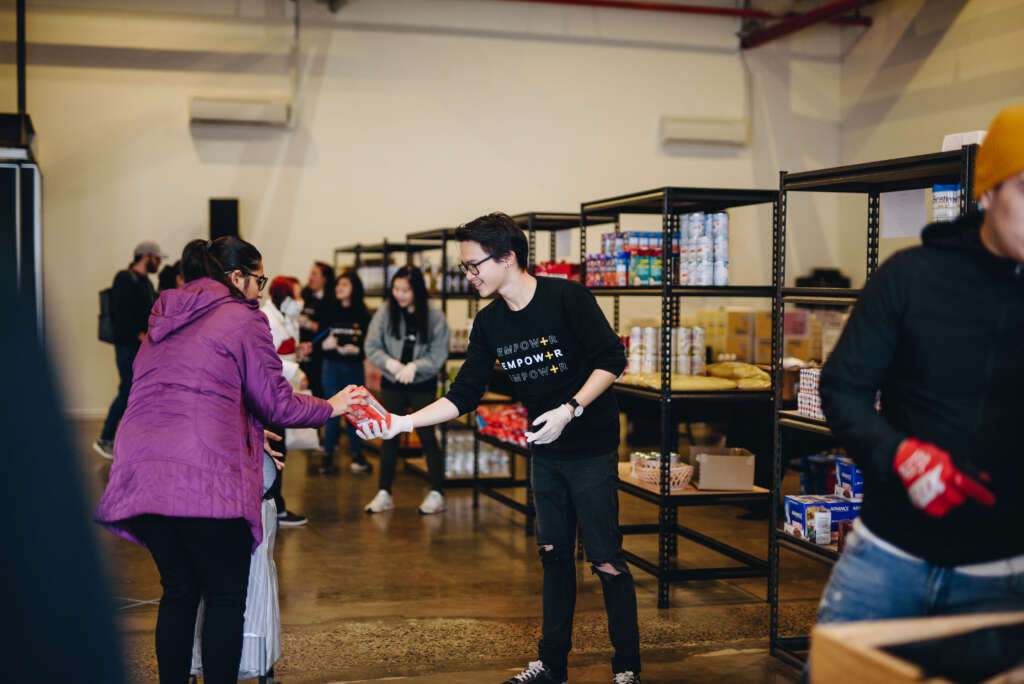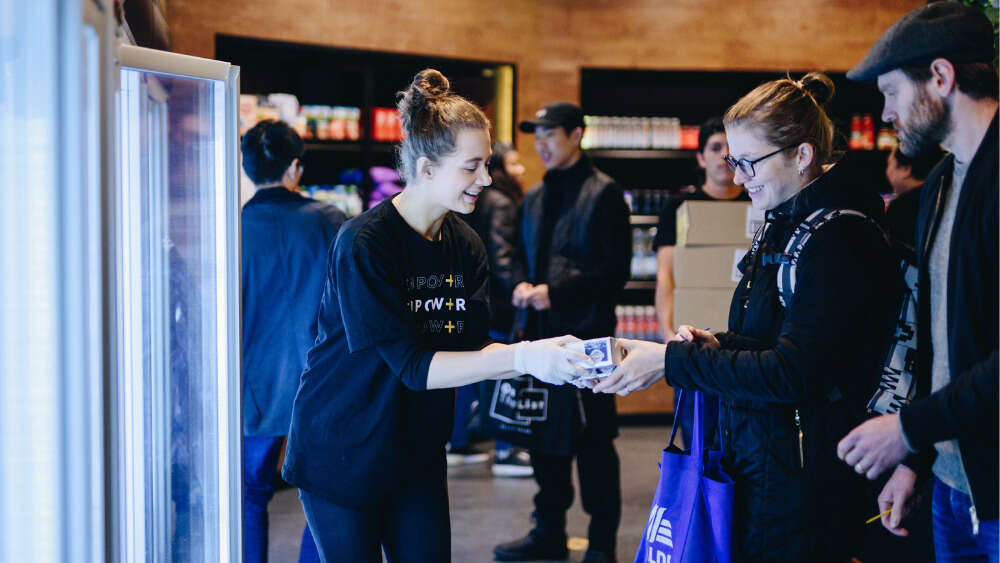How Planetshakers became Australia's largest face-to-face food charity
‘Our model is serve the community’
Planetshakers Church didn’t set out to be the largest face-to-face food charity in Australia. But, thanks to COVID, that’s precisely what this Melbourne-based megachurch has become.
Planetshakers has provided almost 2 million meals to those in need since the start of the pandemic.
During that time, the church’s food relief program has grown from providing around 200 meals a month to 70,000 meals a month. That equates to 40,000 tonnes of food distributed each month – a task that relies on 4000 hours of monthly volunteer time.
“We made a decision to be a church that cares for the community,” says Neil Smith, CEO of Empower Australia, Planetshakers’ charitable arm.
He is explaining to Eternity how, many years ago, caring for the vulnerable in the local community went from being a peripheral activity to one at the core of Planetshakers’ ministry.
It’s not about providing care in order to convert people, Smith explains. Rather, he says, it’s simply caring because that’s what the church is called to do.
“Basically our model is serve the community. So, we ask what is the need? Then we service the need,” he says.
That’s led the church to get involved in running anti-bullying and anti-racism programs at local schools; hosting barbecues for people in housing commission flats; giving hefty donations to local charities and organisations (like women’s shelters and The Royal Children’s Hospital Melbourne); and running a refugee support program and English classes – among other activities.
A food relief service had also been part of Empower’s ministry for over a decade, run out of its main site in Southbank. But when the pandemic hit, food insecurity skyrocketed among the local community. As most of the other outreach programs couldn’t continue during COVID lockdowns anyway, the church threw much of its effort behind the food relief program.

Planetshakers Empower Australia food relief centre in Melbourne city. Planetshakers Church
In March 2020, Empower quickly created four more emergency food relief centres at some of its other Melbourne campuses, in Pakenham, Lower Plenty, Ringwood and Geelong. The church spent over $60,000 to make these centres look like high-end supermarkets, designed to “preserve the dignity” of people seeking help.
Visitors can choose their own supplies from shelves attractively stacked with fresh fruit, vegetables, non-perishable foods and everyday household items. Wood panelling and plants give the spaces a fresh, funky vibe. In the Southbank centre, two separate ‘supermarket’ areas were created to accommodate more people and to enable social distancing.
Within the first eight weeks after the additional food relief centres opened, Empower went from providing 200 meals a month to around 9000 meals.
At the main centre in Southbank, people lined up around the block on the days it operated. International students were among the most frequent visitors, as they were unable to access government benefits and casual work dried up in industries like hospitality and retail during COVID lockdowns.
Planetshakers’ food relief program soon became so well known and respected that they were approached by food rescue organisations Foodbank Victoria, Second Bite, OzHarvest and Fareshare to offer them food supplies. One of the main drawcards of Empower’s food relief operation, which these organisations recognised, is the huge number of volunteers – around 200 – willing to help.
“Foodbank, for a while, gave us everything for free. Then a few government grants just more or less rung us and said, would you like a van [to pick up food supplies]?
“Even the health minister himself, who is the local member, came to visit our centre,” says Smith.

People queue outside Planetshakers food relief centre at Southbank. Planetshakers Church
Some corporates also joined in funding matching programs to support Empower’s food relief.
“One of the great stories is McCain’s,” shares Smith. “One of their middle managers was driving past the centre. He yelled out to one our staff, ‘What goes on in there?’ We thought he was going to abuse us!
“Our staff member explained we’re a food relief centre and he goes ‘Oh, that’s what I thought.’ Then he said, ‘Can I come in?’
“So he came in and then he told us he was with McCain’s. Within about two weeks –this is in the height of the pandemic – he wanted to gift us well over a million dollars worth of food.
“So McCain’s have been a great friend of ours. In fact, they have offered us way more than we can take at times in terms of storage in freezers and fridges.”
This is the irony, as Empower has discovered, that faces food relief organisations: there is often far more food available than people to move it and places to store it.
“If we could organise pickup, we could get almost unquantifiable amounts of food,” says Smith.
Of course, the volume of food now being distributed meant Empower had to make major changes to the way their service operated.
“Prior to the pandemic, 80 per cent of the food came from the church members. Today, maybe it’s 15 per cent. It’s probably not greatly different [in terms of how much food church members are providing]. It’s just that our volumes have escalated,” says Smith.

A volunteer assists a visitor at Planetshakers food relief centre. Planetshakers Church
Two years later, standing in the vast warehouse where the food relief program is coordinated, it’s clear that this is now a major operation.
Pallets and shelves with boxes of food staples line the warehouse. An industrial freezer is stacked with supplies. Press-seal machines are used to separate bulk supplies of staples, like rice, into smaller bags for individual customers. In the ‘supermarket’, supplies are colour coded according to type, with shoppers allocated a certain number of each colour depending on the size of their household. And each pallet of donated food is carefully weighed on scales, so accurate figures can be supplied to organisations that donate food. For example, Foodbank Victoria calculates the number of meals provided based on kilograms of food – so one kilogram of food equates to two meals.
“They’re the things we learnt,” says Smith. “We did weigh food previously, but it was a bit hit and miss. Whereas now, it’s very precise.
“For funding matching programs for big corporates, if you don’t have the right measures, these organisations don’t even look at you.”
Empower now also ensures there is a constant supply of staples, so that those who rely on the service know which food they can always get.
“Pre-pandemic, our food supplies changed week to week. Every week people would come and it was like a raffle. So we’ve paid for some of these regular products at times to make sure that we always have around six core items,” Smith explains.
These items include rice, pasta and pasta sauce, canned veggies and fruit, breakfast cereal and snacks.
“Our objective is to use the centre to leverage people out of poverty.” – Neil Smith, CEO of Empower Australia
Significantly, Planetshakers has also set up a food relief centre at its South African campus.
“Our objective is to use the centre to leverage people out of poverty,” says Smith, who also serves as Planetshakers International Director.
“Food is the point of connection. Everybody needs food, but it can’t be the end game,” he adds, in a comment that equally applies to their Australian food relief centres.
Relationships – as well as helping to lift people out of poverty – are at the heart of Empower Australia’s work.
So a waiting area where people queue for their turn to ‘shop’ in the food relief ‘supermarket’ is a key part of the Southbank food relief centre. It’s here that church volunteers chat with people each week and get to know them. ‘Personal shopper’ volunteers also accompany elderly people and Mandarin-speakers and have a conversation with them as they choose food supplies. These conversations with volunteers may be one of the few social interactions that some visitors have all week.
One of the greatest joys for Smith and his team is when people who no longer need food relief pop in to the centre.
“For us, the best stories are ‘I’m not coming here to get food. I’m just coming to say hi,'” he says.
Email This Story
Why not send this to a friend?


